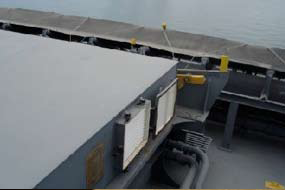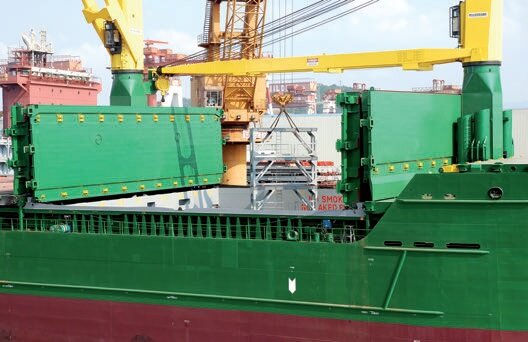
Fig: Hatch cover vents
Hatch Covers
After each load/discharge and before hatch closure, all coamings must be cleared of any cargo residue to avoid damage to the hatch seals. Damage at this point could easily compromise the weathertight integrity of the hatch lid, resulting in damage to cargo. Drainage pipes and non return values at the coaming corners will need to be cleared.
Hatch Jacks
After each use these jacks must be inspected for possible leaks especially at the seals, which will soon show signs of leakage. The pipe connections that run under the coaming of these various joints, are also prone to leakage (in the same manner as the jacks). This, in turn, can lead to slippery decks and possible accidents, including overboard discharge causing pollution.
Chains and Rollers
On older ships, the chains will have stretched through long usage and this will, in turn, cause problems when closing hatches as the jack-up points may not centre over the jacks. Rollers will also show wear on the bearings and split pins, and replacements may be required.
Quick acting cleats and hold downs

